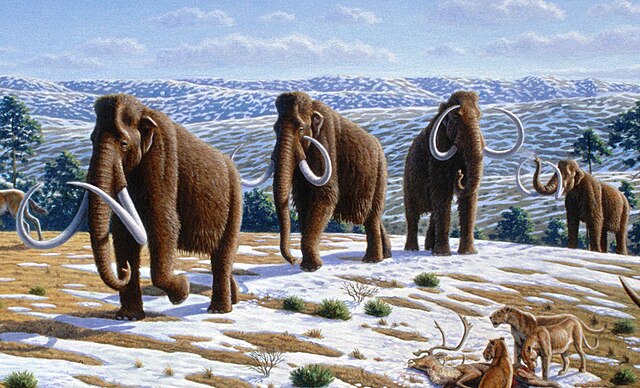There has been quite some talk about scientists bringing back formerly extinct species lately, and I am not quite sure if it is a good idea in some cases. There are definitely some benefits of bringing back certain species, but do those benefits outweigh the cons?
Ever since the beginning of the 20th century, scientists have been trying to bring back specific species. For example, the woolly mammoth, dodos, and moas are all species that scientists have been working on. However, newer species have gone extinct: passenger pigeon (1914) and the Carolina parakeet (1939).
There are a few methods to do what scientists call “de-extinction” or “resurrection biology.” The first method is back breeding. Back breeding is when you selectively pair two domestic species together and try to add back in the traits of their ancestors, specifically the ones that have gone extinct. The second method is cloning. In this case, cloning is when scientists take a nucleus from a cell of the organism they want to clone, and then inject it into an embryo. After a while, the cells may begin to divide and produce an organism. The third way is to do genome editing; genome editing is when scientists remove or add DNA into a sequence. This can add or take away certain characteristics of an organism.
Now for the big question: should scientists bring back extinct species? Personally, I believe that it depends on what animal is being brought back. Dinosaurs are out of the question because it is just not possible for them to be brought back. If you believe in “Old Earth Creationism,” then dinosaurs are millions of years old. After an animal has died, the DNA only lasts for 1 million years. Other creatures like mammoths were way more recent. I believe that if something died out in the past few centuries, it would not cause too much harm.
For example, the Carolina parakeet died out in 1939, so its original habitats could still be suitable for them to live in. However, the woolly mammoth was walking the earth 4,000 years ago, and the world has changed a lot since then. I believe that the world is no longer suitable for them to live in and they might cause a disruption in the environment. Furthermore, bringing them back might cause harm to already existing species. Back breeding with elephants to the woolly mammoth has a chance of not even working, and it can hurt the species all together. Elephants are already endangered, so I personally would not risk it. I also believe that if a species all died out due to natural causes, they should not be back. On the contrary, if they died due to humans, they deserve a second chance.
Bringing back extinct species could be wonderful for the world, but sometimes a species that became extinct within the last decade and the world may not be ready to handle them again.








